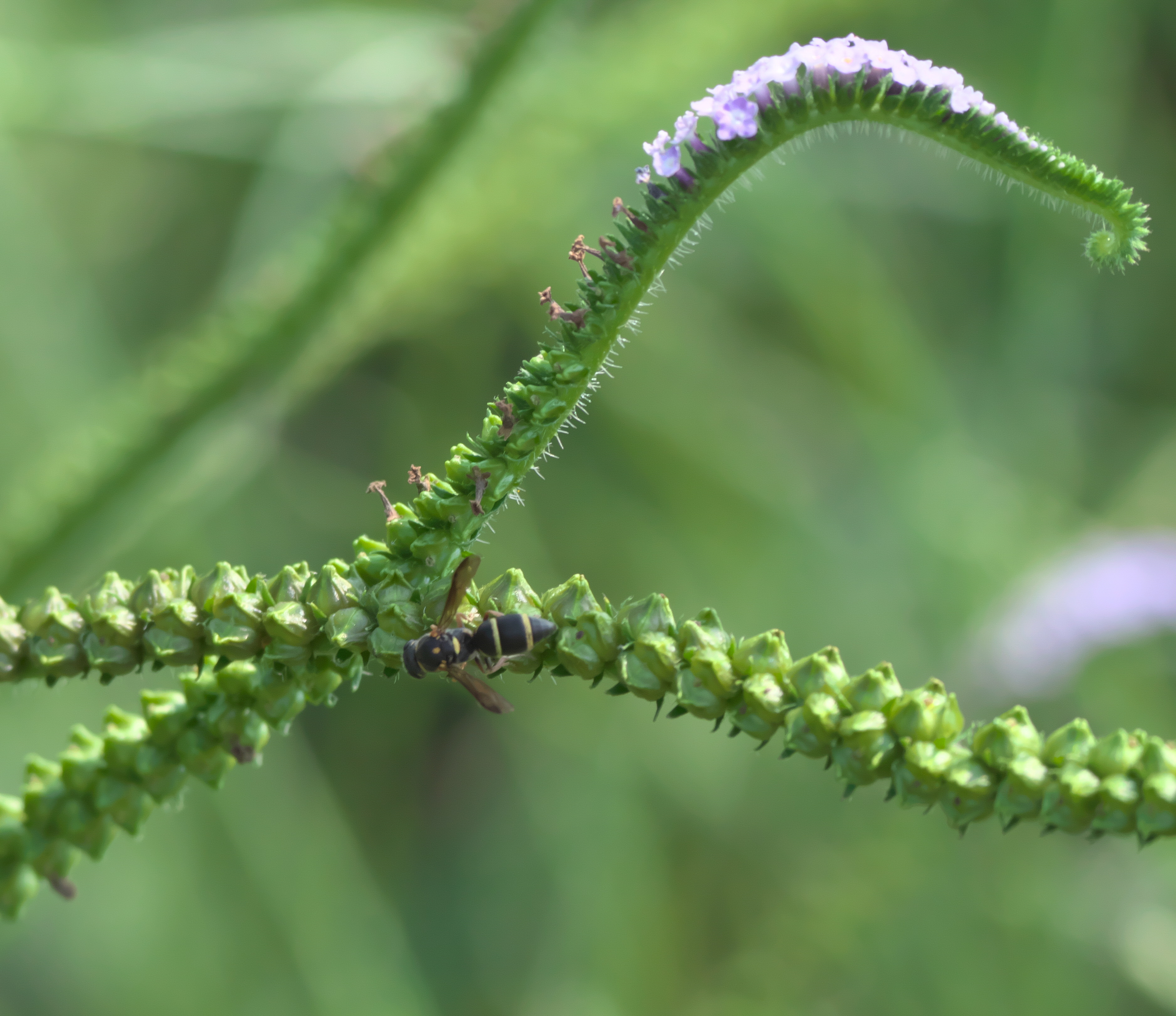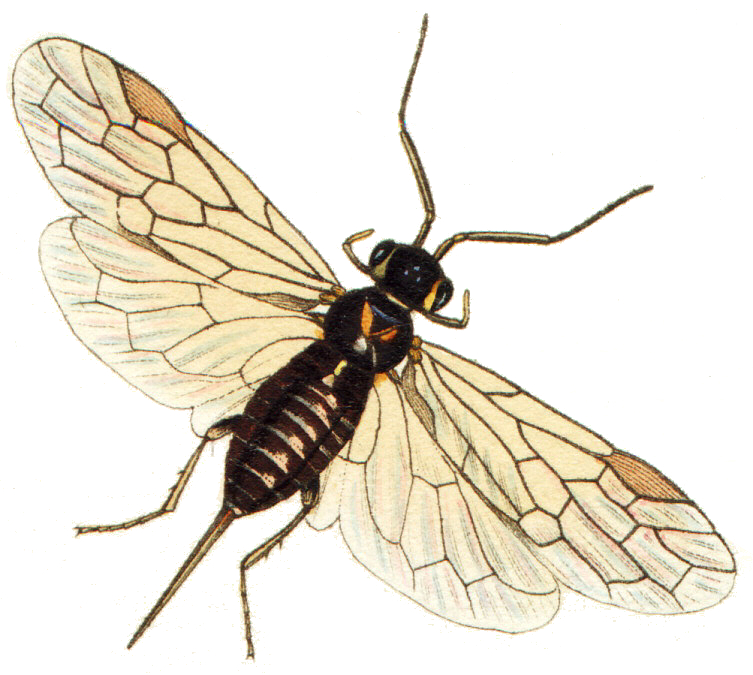|
Parancistrocerus Fulvipes
''Parancistrocerus fulvipes'' also known by the common name ''potter wasp'' is a species of stinging wasp in the family Vespidae. This species' nesting sites include borings in wood, old mud dauber and ''Polistes'' nests, and abandoned burrows of ground-nesting bees, but it may also construct its own burrows in the ground. Prey includes caterpillars of Tortricidae, Nolidae, Chloephorinae, Crambidae, and Gelechiidae. Subspecies These two subspecies belong to the species ''Parancistrocerus fulvipes'': * ''Parancistrocerus fulvipes fulvipes'' * ''Parancistrocerus fulvipes rufovestis'' Bohart, 1948 g b Data sources: i = ITIS, c = Catalogue of Life, g = GBIF, b = Bugguide.net References Further reading * * * External links * Potter wasps Insects described in 1856 {{potter-wasp-stub ... [...More Info...] [...Related Items...] OR: [Wikipedia] [Google] [Baidu] |
Aculeata
Aculeata is a subclade of Hymenoptera containing ants, bees, and stinging wasps. The name is a reference to the defining feature of the group, which is the modification of the ovipositor into a stinger. However, many members of the group cannot sting, either retaining the ovipositor, or having lost it altogether. A large part of the clade is parasitic. This group includes all of the eusocial Hymenopterans. It is theorized that the possession of a venomous sting was important in the repeated evolution of eusociality within Hymenoptera. The oldest aculeates are known from the Late Jurassic Karabastau Formation of Kazakhstan, represented by the family Bethylonymidae, which may be para or polyphyletic. Classification The use of the name Aculeata has a long history at the rank of infraorder or division. The Aculeata are a monophyletic, or good natural group, containing all the descendants of a single common ancestor. The Aculeata are therefore maintained as a taxon In bio ... [...More Info...] [...Related Items...] OR: [Wikipedia] [Google] [Baidu] |
Vespidae
The Vespidae are a large (nearly 5000 species), diverse, cosmopolitan family of wasps, including nearly all the known eusocial wasps (such as ''Polistes fuscatus'', '' Vespa orientalis'', and '' Vespula germanica'') and many solitary wasps. Each social wasp colony includes a queen and a number of female workers with varying degrees of sterility relative to the queen. In temperate social species, colonies usually last only one year, dying at the onset of winter. New queens and males (drones) are produced towards the end of the summer, and after mating, the queens hibernate over winter in cracks or other sheltered locations. The nests of most species are constructed out of mud, but polistines and vespines use plant fibers, chewed to form a sort of paper (also true of some stenogastrines). Many species are pollen vectors contributing to the pollination of several plants, being potential or even effective pollinators, while others are notable predators of pest insect species. The ... [...More Info...] [...Related Items...] OR: [Wikipedia] [Google] [Baidu] |
Mud Dauber
Mud dauber (or "mud wasp" or "dirt dauber") is a name commonly applied to a number of wasps from either the family Sphecidae or Crabronidae which build their nests from mud; this excludes members of the family Vespidae (especially the subfamily Eumeninae), that are instead referred to as "potter wasps". Mud daubers belong to different families and are variable in appearance. Most are long, slender wasps about in length. The name refers to the nests that are made by the female wasps, which consist of mud molded into place by the wasp's Mandible (insect mouthpart), mandibles. Mud daubers are not normally aggressive, but can become belligerent when threatened. Stings are uncommon. Nests The organ pipe mud dauber, one of many mud daubers in the family Crabronidae, builds nests in the shape of a cylindrical tube resembling an organ (music), organ pipe or pan flute. Common sites include vertical or horizontal faces of walls, cliffs, bridges, overhangs and shelter caves or other struct ... [...More Info...] [...Related Items...] OR: [Wikipedia] [Google] [Baidu] |
Polistes
Wasps of the cosmopolitan genus ''Polistes'' (the only genus in the tribe Polistini) are the most familiar of the polistine wasps, and are the most common type of paper wasp in North America. Walter Ebeling coined the vernacular name "umbrella wasps" for this genus in 1975 to distinguish it from other types of paper wasp, in reference to the form of their nests. It is also the single largest genus within the family Vespidae, with over 300 recognized species and subspecies. Their innate preferences for nest-building sites leads them to commonly build nests on human habitation, where they can be very unwelcome; although generally not aggressive, they can be provoked into defending their nests. All species are predatory, and they may consume large numbers of caterpillars, in which respect they are generally considered beneficial. The European paper wasp, ''Polistes dominula'', was introduced into the US about 1981 and has quickly spread throughout most of the country, in most ca ... [...More Info...] [...Related Items...] OR: [Wikipedia] [Google] [Baidu] |
Tortricidae
The Tortricidae are a family of moths, commonly known as tortrix moths or leafroller moths, in the order Lepidoptera. This large family has over 11,000 species described, and is the sole member of the superfamily Tortricoidea, although the genus '' Heliocosma'' is sometimes placed within this superfamily. Many of these are economically important pests. Olethreutidae is a junior synonym. The typical resting posture is with the wings folded back, producing a rather rounded profile. Notable tortricids include the codling moth and the spruce budworm, which are among the most well-studied of all insects because of their economic impact. Description Tortricid moths are generally small, with a wingspan of 3 cm or less.Hanson, Paul E. (04-11-2018). Insects and Other Arthropods of Tropical America. Cornell University Press. Many species are drab and have mottled and marbled brown colors, but some diurnal species are brightly colored and mimic other moths of the families Geome ... [...More Info...] [...Related Items...] OR: [Wikipedia] [Google] [Baidu] |
Nolidae
Nolidae is a family of moths with about 1,700 described species worldwide. They are mostly small with dull coloration, the main distinguishing feature being a silk cocoon with a vertical exit slit. The group is sometimes known as tuft moths, after the tufts of raised scales on the forewings of two subfamilies, Nolinae and Collomeninae. The larvae also tend to have muted colors and tufts of short hairs. Formerly, this group was included in the Noctuidae. Subfamilies * Chloephorinae * Collomeninae * Eligminae * Nolinae * Risobinae Monotypic subfamilies * Afridinae – ''Afrida'' * Bleninae – '' Blenina'' * Diphtherinae – '' Diphthera'' (monotypic genus) * Eariadinae – '' Earias'' * Westermanniinae – ''Westermannia'' Genera ''incertae sedis'' The following genera Genus ( plural genera ) is a taxonomic rank used in the biological classification of living and fossil organisms as well as viruses. In the hierarchy of biological classification, genus comes abov ... [...More Info...] [...Related Items...] OR: [Wikipedia] [Google] [Baidu] |
Chloephorinae
Chloephorinae is a subfamily of the moth family Nolidae. It includes, among others, many of the moths known as silver-lines. They are rather similar to some owlet moths (Noctuidae) in appearance and often colored a vivid green, but may also be brown, grey, or white. Genera ''incertae sedis'' In addition to the about 55 genera assigned to tribes, there are some additional ones of undetermined relationships: *'' Acachmena'' Turner, 1908 *'' Apothriguna'' Berio, 1962 *'' Armactica'' Walker, 1865 *'' Austrocarea'' Holloway, 1977 *'' Autanthema'' Warren, 1912 *'' Beara'' Walker, 1866 *'' Chlorozada'' Hampson, 1912 *'' Clethrophora'' Hampson, 1894 *'' Clytophylla'' Turner, 1929 *'' Dilophothripoides'' Strand, 1917 *'' Erizada'' Walker, 1865 *'' Gabala'' Walker, 866/small> *''Gelastocera ''Gelastocera'' is a genus of moth in the family Nolidae. Species * '' Gelastocera castanea'' Moore, 1879 * '' Gelastocera discalis'' Draudt, 1950 * '' Gelastocera eminentissima'' Bryk, 1948 * ' ... [...More Info...] [...Related Items...] OR: [Wikipedia] [Google] [Baidu] |
Crambidae
The Crambidae are the grass moth family of lepidopterans. They are variable in appearance, the nominal subfamily Crambinae (grass moths) taking up closely folded postures on grass stems where they are inconspicuous, while other subfamilies include brightly coloured and patterned insects which rest in wing-spread attitudes. In many classifications, the Crambidae have been treated as a subfamily of the Pyralidae or snout-moths. The principal difference is a structure in the tympanal organs called the praecinctorium, which joins two tympanic membranes in the Crambidae, and is absent from the Pyralidae. The latest review by Munroe and Solis, in Kristensen (1999), retains the Crambidae as a full family. The family currently comprises 15 subfamilies with altogether 10,347 species in over 1,000 genera. Systematics *subfamilia incertae sedis **''Conotalis'' Hampson, 1919 **''Exsilirarcha'' Salmon & Bradley, 1956 *Subfamily Acentropinae Stephens, 1836 *Subfamily Crambinae Latreill ... [...More Info...] [...Related Items...] OR: [Wikipedia] [Google] [Baidu] |
Gelechiidae
The Gelechiidae are a family of moths commonly referred to as twirler moths or gelechiid moths. They are the namesake family of the huge and little-studied superfamily Gelechioidea, and the family's taxonomy has been subject to considerable dispute. These are generally very small moths with narrow, fringed wings. The larvae of most species feed internally on various parts of their host plants, sometimes causing galls. Douglas-fir (''Pseudotsuga'') is a host plant common to many species of the family, particularly of the genus '' Chionodes'', which as a result is more diverse in North America than usual for Gelechioidea. By the late 20th century, over 900 genera with altogether more than 4,500 species were placed here, with about 650 genera known from North America alone. While these figures are certainly outdated, due to the many revisions to superfamily Gelechioidea and new descriptions of twirler moths, they still serve to show the enormous biodiversity contained in this ... [...More Info...] [...Related Items...] OR: [Wikipedia] [Google] [Baidu] |
Parancistrocerus Fulvipes P1310815a
''Parancistrocerus'' is a rather large genus of potter wasps whose distribution spans the Nearctic, eastern Palearctic, Oriental and Neotropical regions. A pair of medial pits on the anterior face of the pronotum and the expansion of the tegulae put this genus close to the genus ''Stenodynerus'' and many species of both genera are somewhat difficult to assignate to their respective genus. Their species are notable for having a smooth depression acting as an acarinarium at the base of the second metasomal tergum and hidden under the first metasomal tergum. This acarinarium serves as shelter for symbiotic deutonymphs of mites in the family Winterschmidtiidae. Most of the species bear a transverse carina on the first metasomal tergum and the whole body of many neotropical species have a faint submetallic luster. See also * List of Parancistrocerus species These 111 species belong to ''Parancistrocerus'', a genus of potter and mason wasps in the family Vespidae. ''Parancist ... [...More Info...] [...Related Items...] OR: [Wikipedia] [Google] [Baidu] |
Potter Wasps
A potter is someone who makes pottery. Potter may also refer to: Places United States *Potter, originally a section on the Alaska Railroad, currently a neighborhood of Anchorage, Alaska, US *Potter, Arkansas *Potter, Nebraska *Potters, New Jersey * Potter, New York * Potter, Wisconsin * Potter County, Pennsylvania * Potter County, South Dakota * Potter County, Texas *Potter Lake, Wisconsin *Potter Township (other) * Potter Valley, California ** Potter Valley AVA, California wine region in Mendocino County Elsewhere *7320 Potter, an asteroid *Potter Island, Nunavut, Canada * Potter Peninsula, South Shetland Islands People and fictional characters *Potter (name), a given name and a surname, including a list of people and fictional characters with the name Arts, entertainment, and media * ''Potter'' (TV series), a TV sitcom starring Arthur Lowe * Harry and the Potters, an American rock band *Harry Potter, worldwide bestselling book and film series * Miss Potter * The Pot ... [...More Info...] [...Related Items...] OR: [Wikipedia] [Google] [Baidu] |






